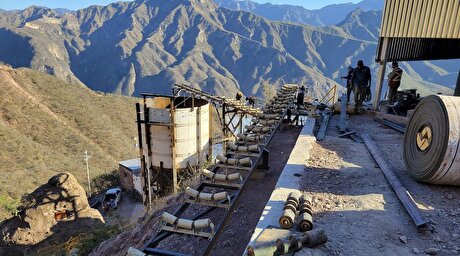
As metal trade shrinks, exchanges fight back with new products

‘Doctor Copper’ has long been a favourite metallic play among punters and sliding volumes were symptomatic of a sector that was largely out of favour with the money men.
The London Metal Exchange’s (LME) copper contract saw activity fall by 8% last year. The declines were more pronounced on both the CME and Shanghai Futures Exchanges (ShFE) contracts with volumes slumping by 25% and 29% respectively.
Only nickel bucked the broader trend thanks to heightened price volatility and the metal’s electric vehicle credentials
Only nickel bucked the broader trend thanks to heightened price volatility and the metal’s electric vehicle credentials. Trading volumes rose by 3% in London and by 40% in Shanghai, where nickel has also assumed the role of junior partner in a proxy trade with the much larger iron ore market.
Exchanges can’t do much about manufacturing slowdown or the resulting range-bound pricing but they are expanding their product range and opening up entirely new markets.
Base metals downturn
It was a year to forget for many of the base metals with copper, aluminium, zinc and lead closing out 2019 little changed from year-start levels.
Total volumes on the London market, which still dominates physical pricing, fell by 4.6% last year after a similar-sized rise in 2018.
In truth the LME fared slightly better than suggested by the headline figure, which includes so-called “UNA” trades introduced to comply with European MiFIDII regulations. Strip those out and the year-on-year decline was only 1.9%.
Even so, activity on all the LME’s core contracts fell last year with the exception of nickel, the top price performer among the base metals in 2019, and tin, the weakest price performer. The same two metals were the only two to register higher volumes in Shanghai.
Tin remains a tiny futures market by comparison with nickel but even it dwarfs the LME’s aluminium alloy contract, which with volume growth of 7% was the unlikely star performer last year.
That outperformance, however, should be seen in the context of falling activity in each of the previous four years.
New products
The LME launched two new aluminium premium contracts in March last year but with only limited success. The North American contract traded just 939 lots while the European product failed to trade at all.
CME, which launched the first of its four aluminium premium contracts as far back as 2013, appears to have captured this particular part of the market with total volumes last year of 152,353 contracts.
Not all new products flourish and the LME’s new cobalt and molybdenum contracts failed to get any traction last year
Its underlying aluminium contract looked in danger of disappearing altogether with no trades at all in 2018 but the contract sprang into life in the second half of 2019 after CME extended physical delivery to Asian locations such as Singapore and the Malaysian ports of Johor and Port Klang. They currently account for 9,291 tonnes of CME’s total 17,145 tonnes of registered aluminium stocks.
CME zinc stocks have shrunk to just 6 tonnes and the contract, which didn’t trade in the second half of the year, looks perilously close to following the CME lead contract into oblivion.
Volumes in the CME’s copper options contract doubled year-on-year and the exchange’s weekly options contracts, launched in 2018, steadily gained traction over the course of 2019.
As did the ShFE copper options contract, also launched in 2018. Almost 8.4 million lots traded in 2019 with open interest in December standing at 64,526 lots, up 16% on December 2018.
More new base metal products were launched last year by Hong Kong Exchanges and Clearing (HKEx), the owner of the LME.
A suite of dollar-denominated “mini” contracts appear to be succeeding where the yuan-denominated offering has largely failed. Total volume was 29,334 contracts since launch in August, compared with just 237 over the whole year for the Chinese currency products.
The new steel frontier
All three exchanges are also making steady inroads into the ferrous sector, which has historically proved stubbornly resistant to futures trading.
The LME’s scrap and rebar contracts have traded since the start of 2018 and are seeing respectable activity. Two new contracts, covering hot rolled coil (HRC) in China and North America, have seen volumes build since trading started in March last year. The former set a new monthly volume record of 16,297 lots in December, bringing the 2019 total to 45,884 lots.
The exchange has dropped plenty of hints it will consider building out its ferrous portfolio further, given the level of participation in the current offerings.
It’s noticeable that the CME’s HRC contract has seen increased action since the LME re-entered the steel sector after the failure of its former billet contract. CME volumes grew by 89% in 2018 and by another 45% last year, when the equivalent of almost 3.5 million tonnes traded.
ShFE currently runs the highest-volume global steel contract. Steel rebar volumes dropped 12% last year but still total led 930 million contracts. Even allowing for the fact that ShFE double-counts its volumes, a practice that changed at the start of 2020, it’s still a staggering figure.
The Chinese exchange last year extended its ferrous product range with a new stainless contract, which traded 1.2 million lots in the first four months.
Qianhai surprise
Not all new products flourish and the LME’s new cobalt and molybdenum contracts failed to get any traction last year.
The lack of interest in the new cash-settled cobalt contract is puzzling, given the steady decline in activity in the older physically deliverable contract, which saw volumes slump by 26% last year. It’s not as if cobalt hasn’t been volatile or that carmakers haven’t expressed support for a way of hedging a key input into electric batteries.
Also strange is the lack of traction gained by either the CME or LME alumina contracts, given the sector has switched towards spot pricing.
CME alumina volumes fell by 79% last year to 118,200 tonnes, while the LME’s new alumina contract notched up trades of just 46,000 tonnes.
Both were eclipsed by the 374,011 tonnes traded on the Qianhai Mercantile Exchange, HKEx’s foray into mainland China.
The QME is something of an anomaly in the global metals exchange world. Barred from offering futures products in mainland China, HKEx has been building out a physical exchange.
Alumina was one of five metallic offerings launched last year. The others are copper cathode, copper rod, aluminium ingot and aluminium billet.
It’s taken several years for HKEx to get the QME up and running but it is worth watching because it represents a clear challenge to the Chinese incumbent in Shanghai.
The big three exchanges currently co-exist in a relatively peaceful order. What the Chinese like to call a “win-win” scenario may not last long if QME picks up trading momentum.

Locksley Resources forms US alliances to establish domestic antimony supply chain

Critical Metals, Ucore ink 10-year offtake deal to supply rare earths to US plant

Equinox Gold kicks off ore processing at Valentine mine

India considers easing restrictions on gold in pension funds

















